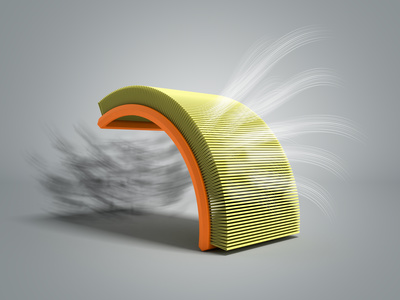Cleaning your home air ducts can be a daunting task, but considering how beneficial clean air is for your health, it is well worth it in the end! You can find Groupons for the pros that will come to your home and clean your home’s air ducts for you. But if you never shopped for a service like this before, you might not know the air duct cleaning cost, so you might not know if it is a good deal or not. So, why not do it yourself? We will show you step-by-step how to clean the air ducts yourself.
How to Clean Air Ducts Yourself Video DIY
Why Do It Yourself?
Most homeowners have never received any sort of training on how to care for their homes (hence why a home warranty can be a good option) and as such, they spend a lot of time and money learning things the hard way. But home air duct cleaning doesn’t need to be one of those things you pay someone else to do or you spend a lot of time and money learning how to do it. Instead, we are going to go step by step and explain how to do and why. This can help save you time, energy and money.
Air Duct Cleaning – Cost Savings:
Professional home air duct cleanings services can range $85-150 per cleaning * depending on the size of your home.
If you own your home for 30 years, which is the average mortgage taken by homeowners, you will spend $5100 – $9000 over the lifetime of the home just paying someone else to clean your air ducts twice each year.
Buying the supplies, the air duct cleaning tools is a one-time cost. Most people already own a vacuum, power drill, and other items that can be purchased at your local hardware store and should have a good lifespan. The flex duct brush can also be used for cleaning other things as well, as the vent to your clothes dryer.
How Often Should You Clean Your Air Ducts?
You should clean your homes air ducts 1-2 times a year, the most common times are at the beginning of the spring and fall. For fall this starts the time of year that many people begin spending more of their time indoors and if they had their windows open all summer the chances of bringing dirt into their HVAC system have increased. For spring this marks the time after everyone has spent all their time indoors during the winter and getting a fresh start with a clean system is ideal. If you have pets or allergies you may want to do this more frequently. Cats and dogs in particular that shed a lot of their fur can begin to pile up in your vents from the return vents sucking their hair into the HVAC system. Most of the time your air filters will catch these and other dust particles. However, if you haven’t cleaned your filter on a regular basis this can make your HVAC system work harder than it needs to.
What Air Duct Cleaning Tools Do You Need?
 The air duct cleaning tools you need to complete the task: some you may need to buy but buy them once and you shouldn’t have to buy them again, thus saving you money on a regular basis whenever you clean your air ducts.
The air duct cleaning tools you need to complete the task: some you may need to buy but buy them once and you shouldn’t have to buy them again, thus saving you money on a regular basis whenever you clean your air ducts.
Power Drill: Using a power drill to remove screws from the vents can be handy, but you can also just use a screwdriver.
Flex Duct Brush: It will attach to the drill and you can turn the drill on and it will spin cleaning out the air ducts.
Nut Driver: Should come with various sizes, this will help if your home has various sizes of bolts holding the vent covers on and when accessing your HVAC system furnace cover, to clear out the inside of the unit.
Vacuum: Used to suck out all of the dirty from the air ducts and from the HVAC systems furnace coils, it is helpful to have a dry vacuum that can handle multiple attachments. Not all vacuums come with the ability to have attachments, although most newer models do these days.
Paper Towels: Used to wipe off the visible dust and dirt from within the air ducts and return ducts.
New Air Filter: This should be done every few months, so if you time it right you can have your biannual air duct cleaning and your changing of your furnace air filter on the same schedule.
Optional:
A protect mask is most helpful if you are allergic or sensitive to dust and dirt in the air because when you are cleaning the air ducts yourself you can stir up some dust and create problems for your allergies until the dust has settled.
A leaf blower can be used in more extreme cases of needing to remove air because it does stir up quite a bit of dirt and dust and makes a little bit of a mess. If you are cleaning your air ducts you may end up cleaning up areas around the vents afterward, so plan accordingly when it comes to your regular cleaning schedule not to do it right after you vacuumed and mopped the area.
Which Vents are Which?
 Like most new homeowner you might not know and or understand that your home has multiple types of vents going into the ductwork of the home. An easy way to identify each type of vent is with a tissue test. If you put a tissue on the vent, if it sticks, it is a return duct. That means the vent is there to bring air back to the HVAC system from the house. If the tissue does not stick to the vent it is a supply vent, which blows out warm or cool air from the HVAC depending on if you are using the air conditioning or the heat from the furnace. In new construction homes, they now recommend that having return vents be ducted, while in older homes they may look like the vents just go into the walls with no vent returning them to the furnace.
Like most new homeowner you might not know and or understand that your home has multiple types of vents going into the ductwork of the home. An easy way to identify each type of vent is with a tissue test. If you put a tissue on the vent, if it sticks, it is a return duct. That means the vent is there to bring air back to the HVAC system from the house. If the tissue does not stick to the vent it is a supply vent, which blows out warm or cool air from the HVAC depending on if you are using the air conditioning or the heat from the furnace. In new construction homes, they now recommend that having return vents be ducted, while in older homes they may look like the vents just go into the walls with no vent returning them to the furnace.
Do not be confused, there might be vents on the outside of your home. These vents allow air to flow into and out of your attic and are not a part of your HVAC system and do not need to be cleaned for air duct purposes.
DIY Air Duct Cleaning
The first step after you have gathered all you need to do the job is to turn off the thermostat to your HVAC system, but you will leave the fan on.
You want to leave the old filter in the furnace because it will help catch all the dust and dirt you stir up while cleaning the air ducts. You will replace the filter at the end of the cleaning.
You can then use paper towels to cover the supply vents not being cleaned at the time to keep the dust and dirt from blowing in and out of the vents while you are cleaning other areas. You simply lift the supply vents and place a paper towel between the vent cover and the wall or floor. The vent should hold in place without having to put all the screws back in since you will be returning to remove the paper towels and cleaning each air vent.
Once you have covered each of the supply vents you can go room by and clean out the air ducts as best you can. You can use paper towels to also wipe down dust and dirt that is easily visible and accessible. To reach the rest of the vents you can use a flexible vent pipe if your vacuum doesn’t come with any attachments to reach further into the air ducts. Some vacuums have flexible attachments, others do not. You will find having a flexible attachment is good because most vents have turns that will be harder to clean without it.
At each vent, you will use paper towels to wipe down the visible dust and dirt. Then use the flex duct pipe cleaner attached to the power drill to sweep up any dust and dirt in the air ducts. Then you can use the vacuum with a flexible pipe to suck up anything not picked up by the flex duct pipe cleaner. You may have to clean the flex duct pipe cleaner between air ducts depending on how dirty your air ducts are. You can just run it under the kitchen faucet but be sure to have a catch, so any hair or dirt doesn’t go into your plumbing system and clog it up. Then you replace the air vent cover.
After you have repeated this task at each air duct you can then go to your furnace to clean out the mixed air coils. This sounds more daunting than it is. You will remove the furnace cover and remove any coverings inside the plate. You are going to try and clean the furnace cavity as much as possible. Using the paper towels and the vacuum to suck out as much dirt and dust as you can.
After you have cleaned the furnace cavity as best you can, you can now replace the furnace filter. Write the date on the side of the filter so you know the last time you changed it. Put the cover back on the furnace and go turn your thermostat back on. You can then give yourself a big pat on the back for tackling what may have been a new and scary task of homeownership!




